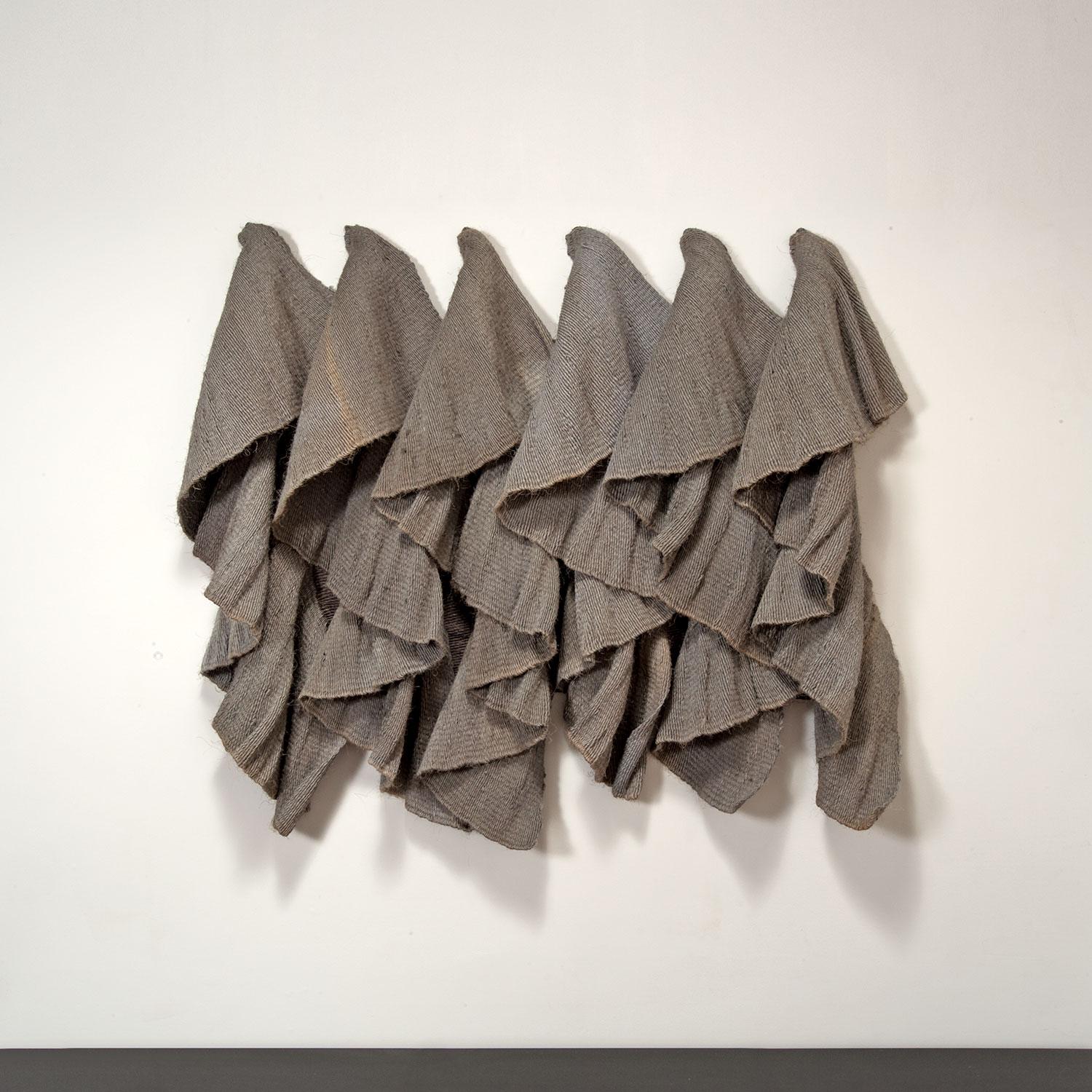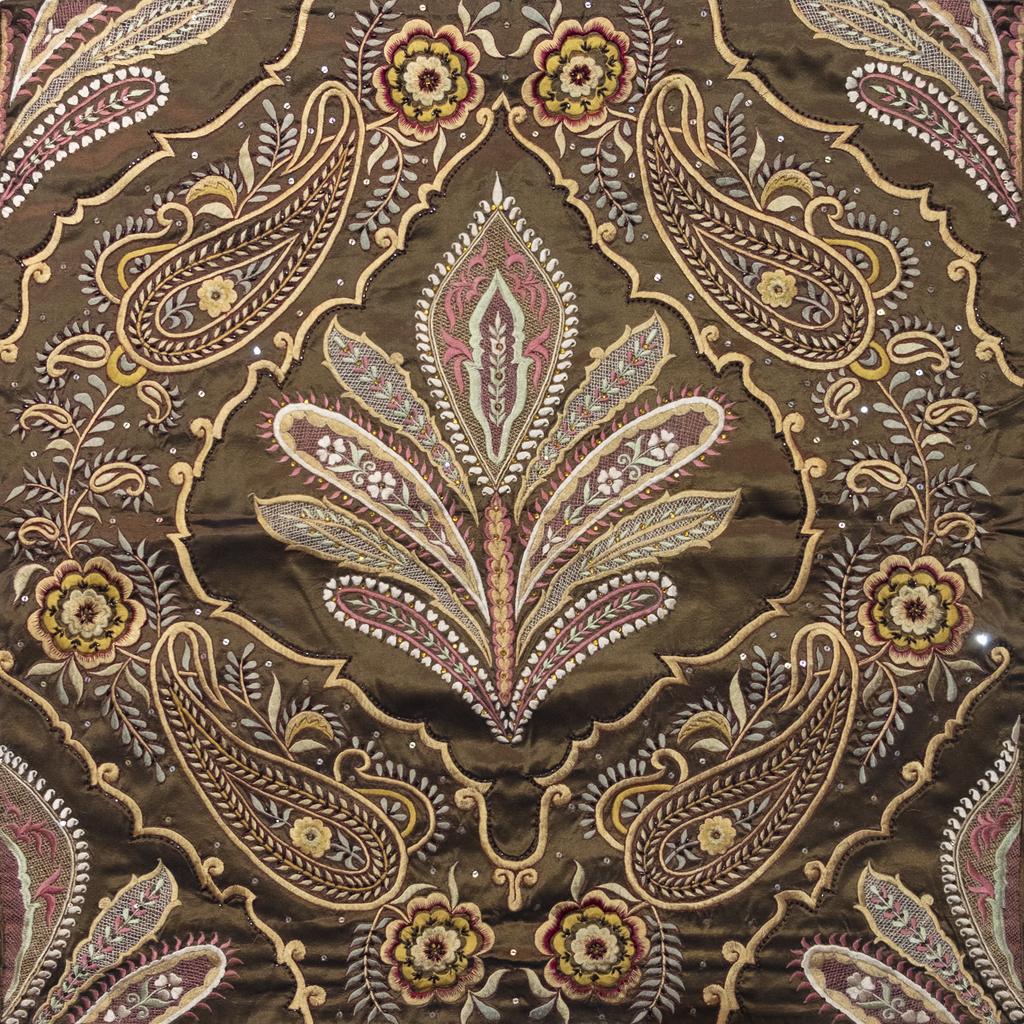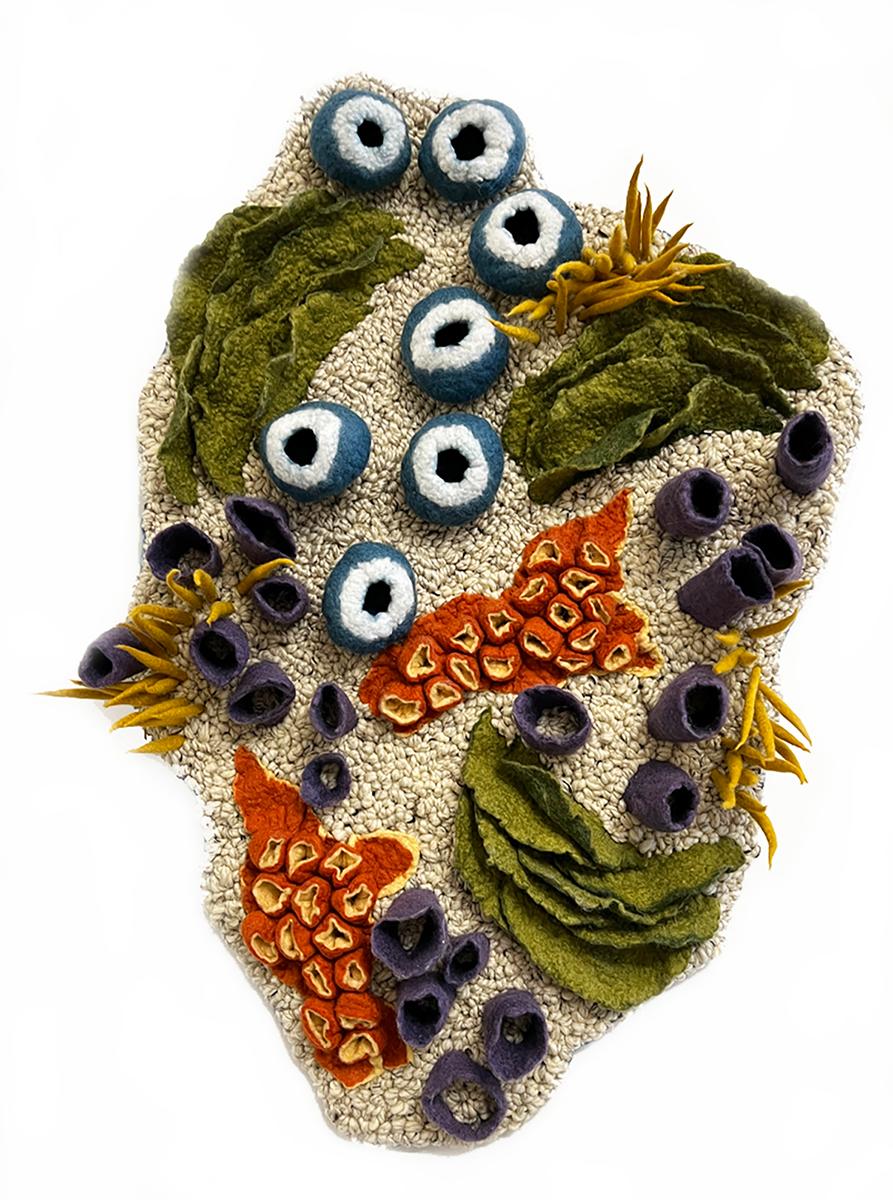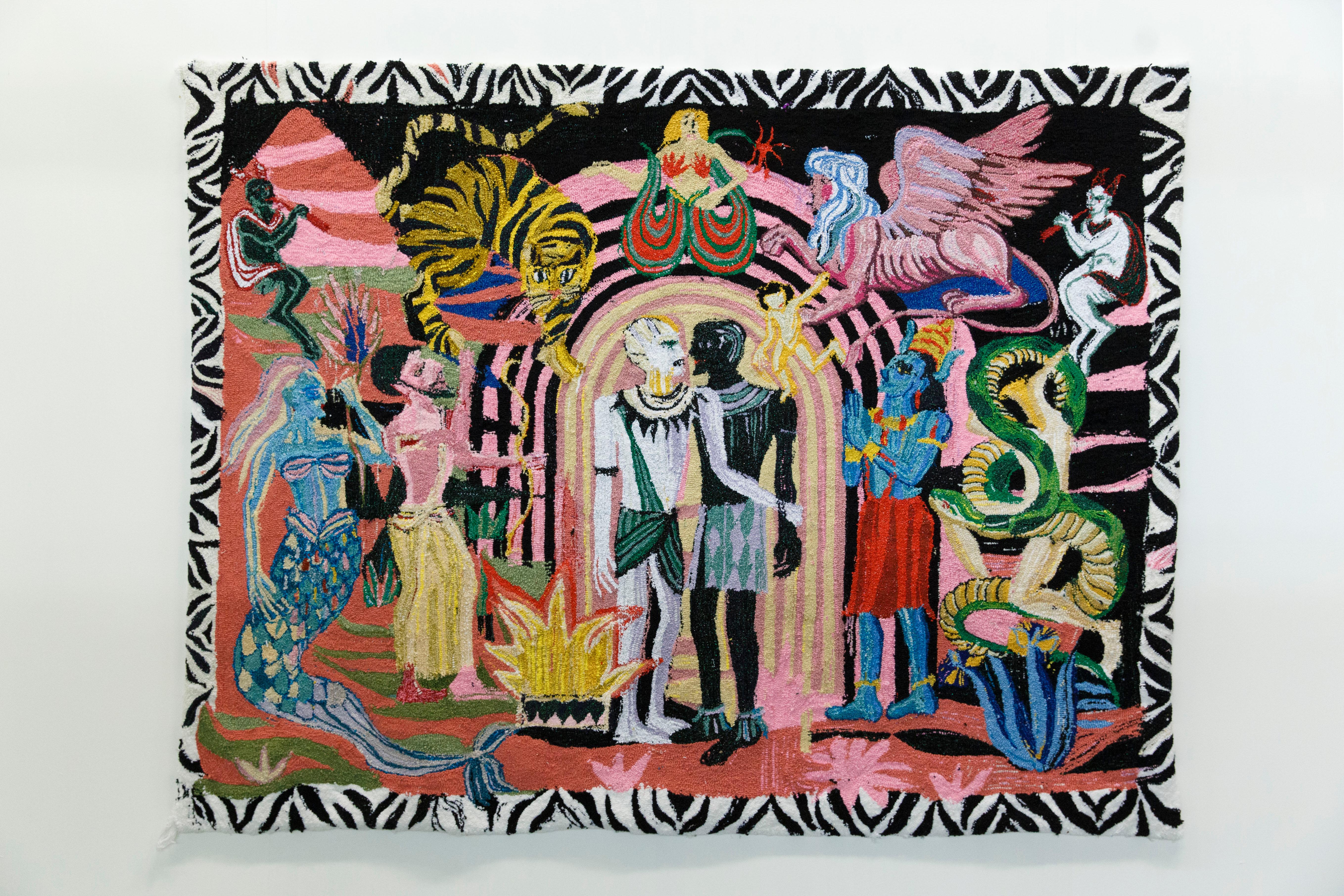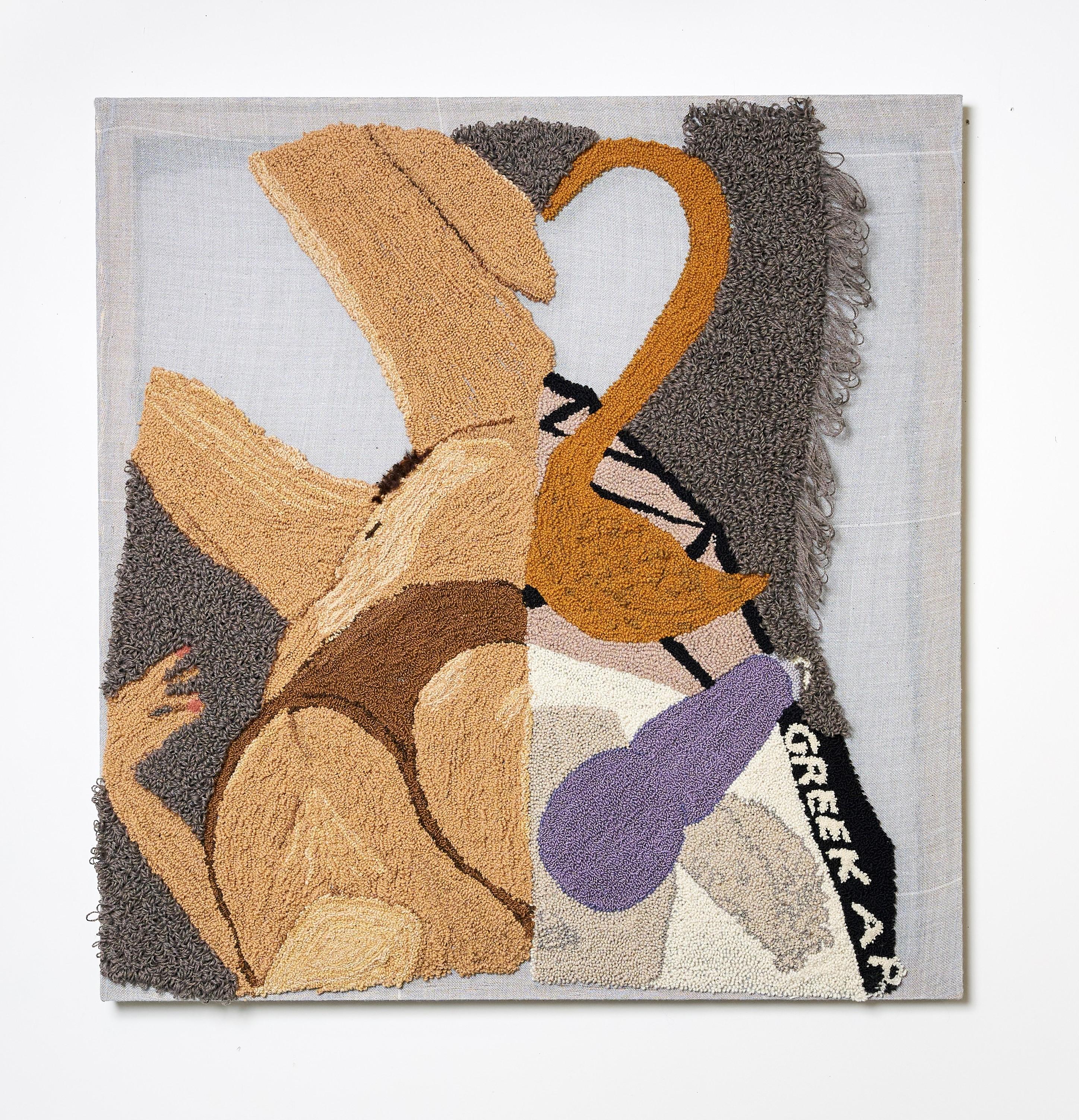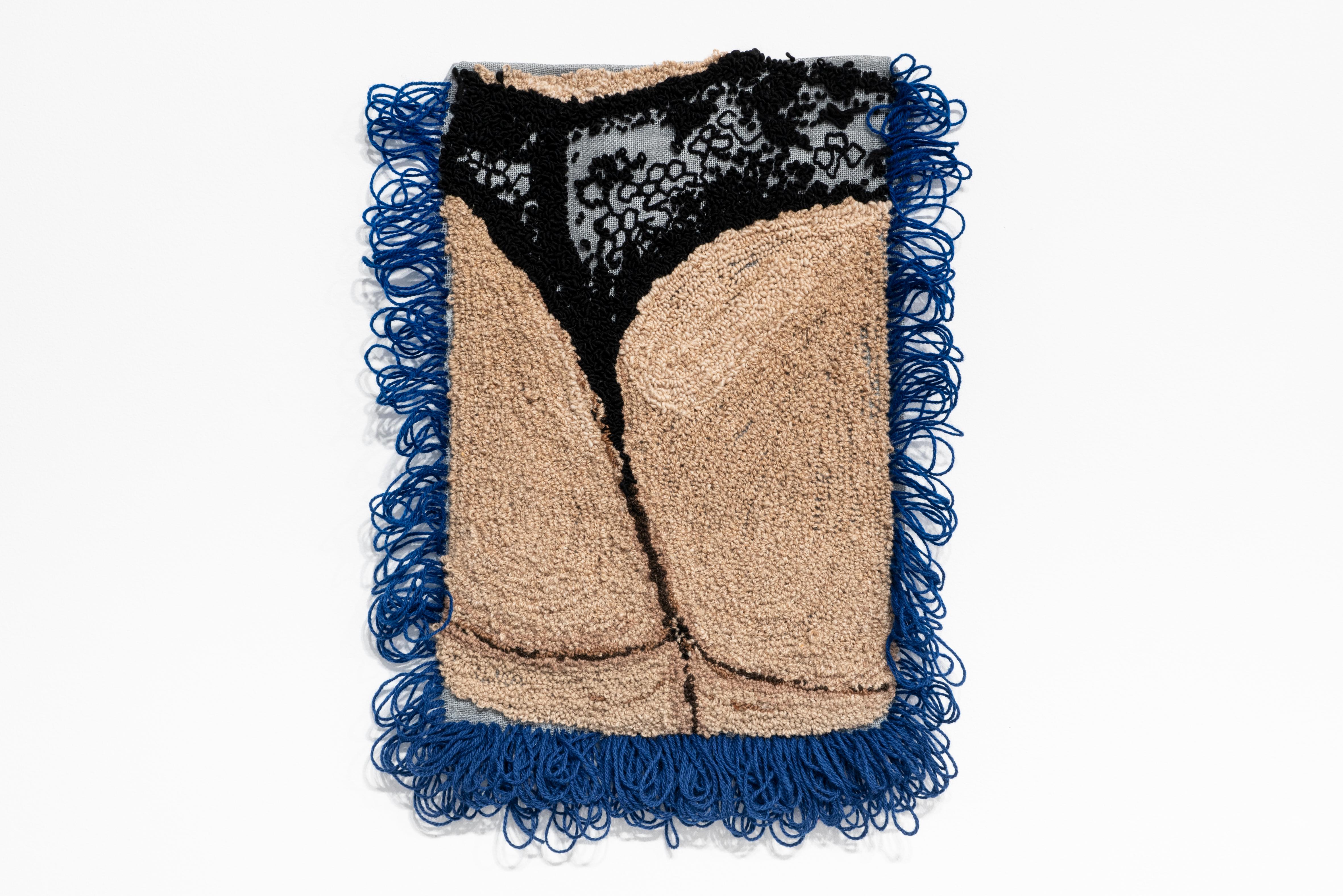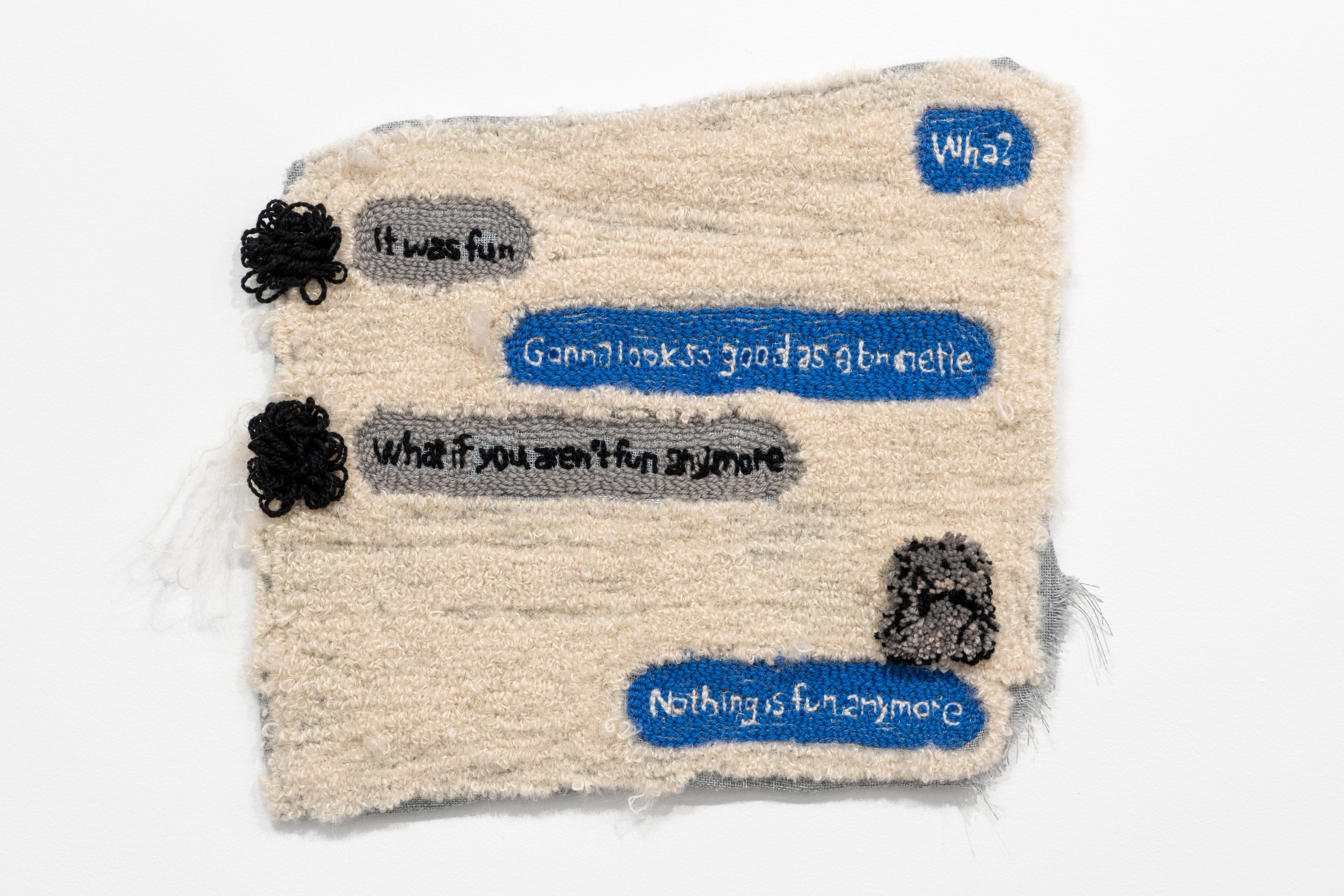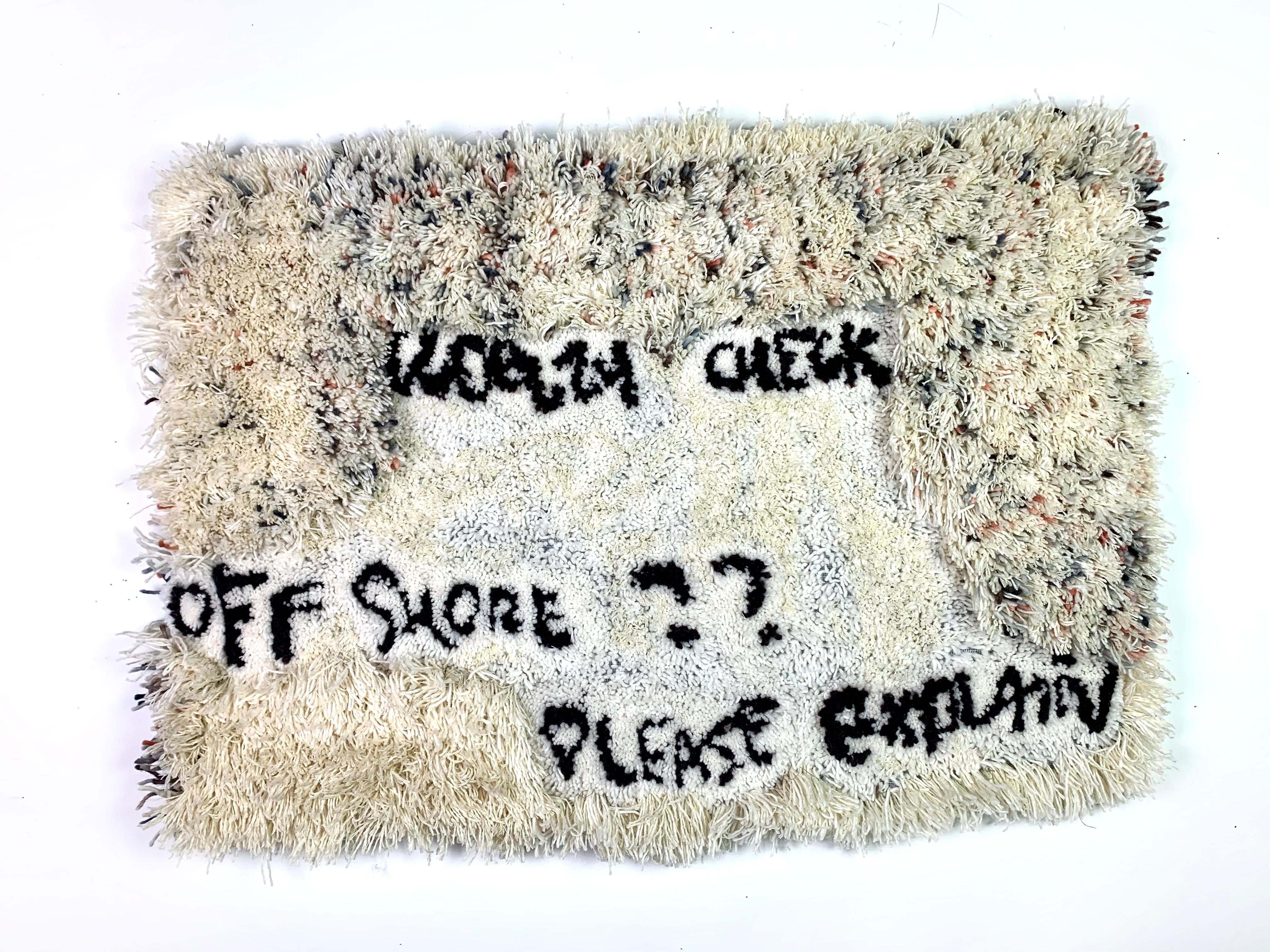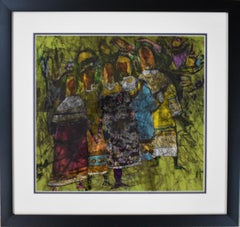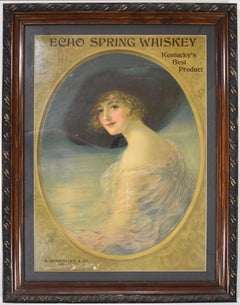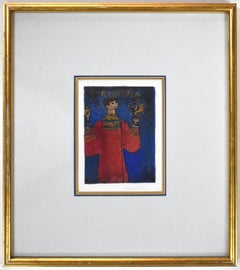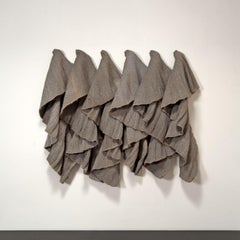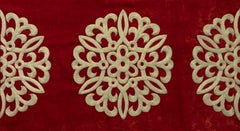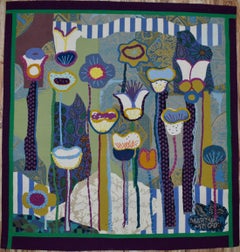
""Floral, Black, White & Orange" MCM Mid Century Modern Tapestry Texas Artist
View Similar Items
Want more images or videos?
Request additional images or videos from the seller
1 of 4
Martha Mood 1""Floral, Black, White & Orange" MCM Mid Century Modern Tapestry Texas Artist1972
1972
$6,900List Price
About the Item
About the Seller
5.0
Vetted Professional Seller
Every seller passes strict standards for authenticity and reliability
Established in 1974
1stDibs seller since 2017
99 sales on 1stDibs
Typical response time: 1 hour
Authenticity Guarantee
In the unlikely event there’s an issue with an item’s authenticity, contact us within 1 year for a full refund. DetailsMoney-Back Guarantee
If your item is not as described, is damaged in transit, or does not arrive, contact us within 7 days for a full refund. Details24-Hour Cancellation
You have a 24-hour grace period in which to reconsider your purchase, with no questions asked.Vetted Professional Sellers
Our world-class sellers must adhere to strict standards for service and quality, maintaining the integrity of our listings.Price-Match Guarantee
If you find that a seller listed the same item for a lower price elsewhere, we’ll match it.Trusted Global Delivery
Our best-in-class carrier network provides specialized shipping options worldwide, including custom delivery.More From This Seller
View All"GIRLS NIGHT OUT" MID CENTURY MODERN BATIK SAN ANTONIO ARTIST
By Margaret Putnam
Located in San Antonio, TX
Margaret Putnam
(1913-1989)
San Antonio Artist
Size: 15 x 16
Frame: 22 x 23
Medium: Batik
"Girls Night Out"
Margaret Putnam (1913-1989)
Margaret Putnam left an artistic legacy rare e...
Category
20th Century Modern Mixed Media
Materials
Fabric
"ECHO SPRINGS WHISKEY" KENTUCKY'S BEST PRODUCT CIRCA LATE 1800'S
Located in San Antonio, TX
Antique Advertising Signs
Image Size: 24 x 17
Frame Size: 27.5 x 21.5
Medium: Lithograph
Late 1800's
"Echo Springs Whiskey" Kentucky's Best Product
Category
Late 19th Century More Art
Materials
Lithograph
"ALLELUJAH" HAND PAINTED ETCHING FRAMED 15 X 14 CIRCA 1960'S
By Margaret Putnam
Located in San Antonio, TX
Margaret Putnam
(1913-1989)
San Antonio Artist
Image Size: 7 x 5
Frame Size: 15 x 14
Medium: Hand Painted Etching
Circa 1960's
"Allelujah"
Margaret Putnam (1913-1989)
Margaret Putnam...
Category
1960s American Modern More Art
Materials
Oil, Etching
EXTRA BEAUTIFUL CRACKLE VASE BY MASTER TEXAS GLAZER HARDING BLACK POTTERY
By Harding Black
Located in San Antonio, TX
Harding Black
San Antonio (1912 - 2004)
Huge Heavy Crackle Vase 1985
Height 14''
Across Widest 8"
Biography
Harding Black San Antonio (1912 - 2004)
Harding Black was born on a farm in Nueces County between Ingleside and Aransas Pass and moved with his family to San Antonio in 1916. There he graduated from Brackenridge High School and attended San Antonio Junior College (1929-30). In 1931 Black joined an archaeological expedition to the Big Bend area sponsored by the Witte Memorial Museum. Initially a painter, he was taught by Rudolph Staffel in 1933 to make wheel- thrown pottery and in the same year began to teach children's ceramic classes at the Witte.
Between 1937 and 1939, Black directed ceramic installation in a San Antonio reconstruction project sponsored by the National Youth Administration and the Works Progress Administration art program. In 1955 he retired from teaching and devoted his time to ceramics. Black became a well-known ceramist from his research, innovations, and writings in the field.
Exhibitions: San Antonio Local Artists Annual Exhibition (1939-42, 1945, 1947); Texas General Exhibition (1940 award, 1942, 1948 honorable mention); National Ceramic Annual Exhibition, Syracuse Museum of Art (1947-54); River Art Group, San Antonio (1948-49); National Collection of Fine Arts, Washington D.C. (1951, 1956); Dallas Museum of Fine Arts (1952 one-man); Martin Museum of Art, Baylor University (1991 one-man); San Antonio Museum of Art (1995 retrospective); National Museum of Art, Washington, D.C. (1995); University of Texas at Dallas, Irving (1998 retrospective). Collections: Dallas Museum of Art; Museum of Fine Arts, Houston; San Angelo Museum of Fine Arts; San Antonio Museum of Art; Martin Museum of Art, Baylor University, Waco; National Museum of American Art, Washington D.C.; New Orleans Museum of Art; Everson Museum of Art, Syracuse, new York; Alfred University (New York).
Harding Black resided in San Antonio Texas where he worked as a potter for over 60 years and far as anyone knows he was completely self taught. I find it amazing that anyone could ever accomplish what he did with with no formal training in either ceramics or chemistry. It was a long and prolific journey from the early hand built earthenware pottery to become recognized as a master of glazes. While I feel that his forms often could be better this is more than compensated for by the spectacular glazes he developed. Constant experimentation and his acquired knowledge of chemistry were the foundations for the wonderful glazes that adorn his pottery.
The following quote is from an interview with Rudolf Staffel His copper reds are unbelievably beautiful. Harding was a master of glazes and one of the most generous human beings in the ceramic field that I've known. He had literally a room full of beautifully organized test tiles of all his glazes, and he would just throw the room open to anybody who wanted to rummage through his tiles. All the recipes were there and he shared them with anyone who was interested. It was wonderful to go and visit him. Although accurate records of all test firings were kept for reference it I have been told that it would be difficult to reproduce many of these glazes because of the kiln he built and clays he used. This may not be the case because in a recent phone conversation (4/11/2007) with Peter Pinnell he told me that some of his students had success replicating some glazes using Harding's formulas By concentrating on the bowl and vessel forms Harding remained true to the historical traditions of pottery making.
The magnificent Harding Black journey began in 1932. At that time he joined the Witte Museum Archaeological Society which provided him with access to their collections of Native American pottery. Harding became fascinated by these pollychromed vessels and he began attempting to create hand built pots. He had very little or no success but a life long of working in clay had begun. It was about this time that he met up with Rudolf Staffel and it was from him that Harding learned wheel throwing and developed ideas of how to operate a studio. Harding was given access to working space at the Witte where he built a wheel and in 1933 he was given a position as ceramic instructor. In this position it was his responsibility to establish a ceramics department. The first kiln Harding built was using plans that were obtained from Newcomb College. He scrounged parts from a junkyard which were used in its construction. This project was not totally successful because of problems reaching required temperatures. As usual this did not deter Harding. He seemed to have a wonderful ability to learn from failure and move on.
In the early 1940's Harding began working with formulas for copper red glazes prepared by Arthur Baggs and Edgar Littlefield. This work only added to his interest in Oriental pottery and fostered a desire to rework many old glazes. Being greatly influenced by A Potters Book published in 1940 by Bernard Leach Harding was now on his way seeking to incorporate form, function and surface treatment into a single entity where the whole is greater than the sum of the parts.
In the 1950's Harding left the Witte and built his own studio where he spent the rest of his life creating his wonderful art. The body of his work is a living tribute to the Harding Black lifelong love of ceramics. Along with being a researcher he was also a teacher always willing to share his knowledge with others. He spent his life producing pots and occasionally taking time off to do a bit if fishing. According to Harding Black - Harding Black 11/14/90 "I am one of the lucky ones. When I get up in the morning I can hardly wait to get to work." 1912 Born April 15 near Aransas Pass, Texas 1916 Family moved to San Antonio 1929 Graduated from Breckenridge High School 1929-30 Attended San Antonio Junior College 1931 Joined Archaeological Society of the Witte Museum, San Antonio, and participated in excavations of ancient Basket maker Indian mounds and caves in the Big Bend area of Texas 1933 Taught by Rudolf Staffel to make wheel-thrown pottery. Set tip studio in a streetcar behind Witte Museum and began teaching children’s ceramic classes 1937-39 Appointed Superintendent of Ceramic Installation for N Y A /W P A reconstruction project in San Antonio 1943 Moved from streetcar studio to new facilities in the reconstructed Ruiz House on the grounds of the Witte Museum Began firing to stoneware temperatures 1947-54 Exhibited each year in the annual National Ceramic Exhibition, Syracuse Museum of Art 1951 Exhibited at the National Museum of Art, Washington, DC 1952 Toured ceramic centers throughout the United States 1953 “Opening the Door to Copper-Reds” by Harding Black, published in January issue of Ceramics Monthly “Harding Black Profile” published in February issue of Ceramics Monthly 1954 “Iron Spotted Glazes” by Harding Black, published in February issue of Ceramics Monthly 1955 Built present studio at 8212 Broadway, San Antonio Retired from teaching at the Witte Museum 1956 Exhibited at the National Museum of Art, Washington, DC 1961 “Lava Glazes” by Harding Black, published in October issue of Ceramics Monthly 1964 “Harding Black Texas Potter” by Jean R Lange, published in November issue of Ceramics Monthly 1971 The Meyer Family Master Potters of Texas, co-authored by Harding Black and Georgeanna H Greet 1980 Harding Black’s biographical information entered into the archives of the Smithsonian Institution, Washington, D C 1983 Harding Black traveled throughout China 1984 Awarded Glaze Research Grant by Southwest Craft Center, San Antonio 1985 Solo exhibition at the Southwest Crafts Center 1987 Selected as Artist of the Year by the San Antonio Art League 1988 Incarnate Word College, San Antonio, establishes Harding Black Fund to aid ceramics students 1990 “Harding Black Pottery...
Category
1980s Modern More Art
Materials
Ceramic
Large Wood Turned Hackberry footed Bowl. Dyed. Master Art Wood Turner Carmie
By Carmie
Located in San Antonio, TX
Carmie (Born 1959) Dyed Hackberry Bowl Height 4'' Diameter 8.75''
Bio
Carmie (1959-)
Wood Turner Carmie K. Acosta was born and raised in San Antonio. By day he works as a synthetic organic chemist specializing in steroid synthesis. His foray into wood turning began in the year 2000 when his father passed away. Growing up, he was surrounded by wood working and the associated wood working tools...
Category
2010s Modern More Art
Materials
Wood
Mesquite hollow form vase/bowl. Natural Art Wood Turning
By Carmie
Located in San Antonio, TX
Carmie (Born 1959) Rustic Mesquite Hollow Form Vase/Bowl Height 4.5" Diameter 5''Biography
Bio
Carmie (1959-)
Wood Turner Carmie K. Acosta w...
Category
2010s Modern More Art
Materials
Wood
You May Also Like
Summer and Winter, Mid-Century Tapestry, Woven Hanging, Textile Wall Sculpture
By Adela Akers
Located in Wilton, CT
Adela Akers (b. 1933, Santiago de Compostela, Spain) is a Spanish-born textile and fiber artist. She is Professor Emeritus (1972 to 1995) at the Tyler Scho...
Category
1970s Abstract Abstract Sculptures
Materials
Textile, Linen, Thread, Yarn, Fabric, Tapestry
Jaali: Kairi (Paisley) - Embroidered Tapestry Wall Hanging
Located in Asheville, NC
Jaali' of Urdu origin meaning netting, is an ornamental open work originally crafted on wood, metal and stone for interiors. A significant feature of Indo-Islamic art, the Jaali is an intricate pattern ranging from delicate trellises to complex floral layouts.
The wall panels depict the interlacing design of the Jaali in mid earth tones on silk. The compositions of flowers and the paisley are embroidered in thread with subtle highlightes of shine.
A note on handmade:
A handmade product is always appealing due to the irregularities in its workmanship. This is what sets it apart from machine made or computerized; the perfection they offer feels synthetic or artificial. Especially when one speaks of art and craft.
These wall panels are works of hand worked embroideries. Imperfections such as an occasional puckering of the base material are expected with the kind of embroidery stitches used.
You are assured these artworks are embroidered by highly skilled artisans (it is not possible for craftsmen of lesser experience to create these pieces) The materials used for the embroideries are of superior quality only.
About: Shabbir Merchant...
Category
2010s Other Art Style Mixed Media
Materials
Fabric, Tapestry, Thread, Yarn, Textile, Silk
$1,000 Sale Price
20% Off
Brocade: Bootas (Motifs) - Embroidered Tapestry Wall Hanging
Located in Asheville, NC
Brocade:
The royal courts of the Maharajas of India were symbols of extravagance. The opulent Brocade or Zari textile was used lavishly to ornament the interiors. Brocade is a heavy weight drape, woven in intricate raised patterns of motifs or all over floral scrolls. What grants this fabric its royal stature is the use of gold and silver metal threads to weave the designs.
These wall panels depict the rich affluent luxury of the Brocade. Gold corded thread embroidered on deep plush velvet creates raised patterns. The artwork is designed to exaggerate the opulence.
A note on handmade:
A handmade product is always appealing due to the irregularities in its workmanship. This is what sets it apart from machine made or computerized; the perfection they offer feels synthetic or artificial. Especially when one speaks of art and craft.
These wall panels are works of hand worked embroideries. Imperfections such as an occasional puckering of the base material are expected with the kind of embroidery stitches used.
You are assured these artworks are embroidered by highly skilled artisans (it is not possible for craftsmen of lesser experience to create these pieces) The materials used for the embroideries are of superior quality only.
About: Shabbir Merchant...
Category
2010s Other Art Style Mixed Media
Materials
Metal, Gold
$600 Sale Price
20% Off
Jaal - Kairi (Paisley) - Velvet Edition - Embroidered Tapestry Wall Hanging
Located in Asheville, NC
Jaali:
Jaali' of Urdu origin meaning netting, is an ornamental open work originally crafted on wood, metal and stone for interiors. A significant feature of Indo-Islamic art, the Jaali is an intricate pattern ranging from delicate trellises to complex floral layouts.
The wall panels depict the interlacing design of the Jaali in mid earth tones on silk. The compositions of flowers and the paisley are embroidered in thread with subtle highlightes of shine.
A note on handmade:
A handmade product is always appealing due to the irregularities in its workmanship. This is what sets it apart from machine made or computerized; the perfection they offer feels synthetic or artificial. Especially when one speaks of art and craft.
These wall panels are works of hand worked embroideries. Imperfections such as an occasional puckering of the base material are expected with the kind of embroidery stitches used.
You are assured these artworks are embroidered by highly skilled artisans (it is not possible for craftsmen of lesser experience to create these pieces) The materials used for the embroideries are of superior quality only.
About: Shabbir Merchant...
Category
2010s Other Art Style Mixed Media
Materials
Fabric, Tapestry, Thread, Yarn, Textile, Silk
Jaali: Phulwari (Flower Garden) - Embroidered Tapestry Wall Hanging
Located in Asheville, NC
Jaali:
Jaali' of Urdu origin meaning netting, is an ornamental open work originally crafted on wood, metal and stone for interiors. A significant feature of Indo-Islamic art, the Jaali is an intricate pattern ranging from delicate trellises to complex floral layouts.
The wall panels depict the interlacing design of the Jaali in mid earth tones on silk. The compositions of flowers and the paisley are embroidered in thread with subtle highlightes of shine.
A note on handmade:
A handmade product is always appealing due to the irregularities in its workmanship. This is what sets it apart from machine made or computerized; the perfection they offer feels synthetic or artificial. Especially when one speaks of art and craft.
These wall panels are works of hand worked embroideries. Imperfections such as an occasional puckering of the base material are expected with the kind of embroidery stitches used.
You are assured these artworks are embroidered by highly skilled artisans (it is not possible for craftsmen of lesser experience to create these pieces) The materials used for the embroideries are of superior quality only.
About: Shabbir Merchant...
Category
2010s Other Art Style Mixed Media
Materials
Fabric, Tapestry, Thread, Yarn, Textile, Silk
$1,000 Sale Price
20% Off
Jamavar: Ecru - Embroidered Tapestry Wall Hanging
Located in Asheville, NC
Jamavar
The Jamavar of Kashmir is an exquisite heritage textile of India. The original Jamavar was a yard-long shawl of pashmina wool with delicate patterns handwoven in multicolored silk weft threads. Its authentic designs are finely intricate, imparting gentle aristocracy with its most outstanding and popular motif being the elongated teardrop, originally called 'buteh'. The 'buteh' is what one now recognizes as the 'paisley'.
These artworks are compositions of the timeless 'buteh' of the Jamavar. The wall panels are embroidered with fine thread cords couched along the pattern.
A note on handmade:
A handmade product is always appealing due to the irregularities in its workmanship. This is what sets it apart from machine made or computerized; the perfection they offer feels synthetic or artificial. Especially when one speaks of art and craft.
These wall panels are works of hand worked embroideries. Imperfections such as an occasional puckering of the base material are expected with the kind of embroidery stitches used.
You are assured these artworks are embroidered by highly skilled artisans (it is not possible for craftsmen of lesser experience to create these pieces) The materials used for the embroideries are of superior quality only.
About: Shabbir Merchant...
Category
2010s Other Art Style Mixed Media
Materials
Metal, Gold
Recently Viewed
View AllMore Ways To Browse
Vintage Portugal Pottery
Vintage Mcm Wall Art
Matisse Nude With Oranges
Mcm Animal
Hawaiian Vintage Fabric
Pottery Mexican Animal
Mcm Art Orange
Hawaii Lighting
Ceramic And Fiber Wall Sculpture
June Nelson
Picasso Woman Flower
June Nelson Artist
Hawaii Pottery
Hawaiian Nude
Lester Young
Mid Century Mesh Sculpture
Vintage Hawaiian Pottery
Charleston Lighting
